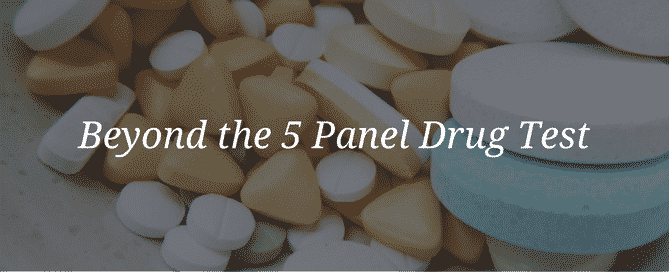In 1988, a new industry was born. Since the Federal Drug-free Workplace Act was implemented, more and more companies implement drug testing programs every year. A 2010 SHRM survey revealed that 57% of employers drug test new hires. That number has been on the rise since 2010.
Why your company should test more than truck drivers.
A critically important segment of the drug testing industry is what we refer to as “DOT testing” – drug testing for companies that employ DOT-regulated workers. These include employees with Commercial Drivers Licenses (CDLs) as well as workers falling under the rules and regulations of the FAA, FTA, FRA, PHMSA as well as the U.S. Coast Guard.
Most non-regulated companies (80% of the industry) understandably model their drug testing programs after DOT protocol. Certainly that’s a good start.
Why it’s JUST a “good start”
The only drug test panel approved for regulated industries is a urine 5 panel drug test. “5 panel” drug screen means five classes of drugs, and includes tests for marijuana, cocaine, amphetamines, PCP and opiates. The amphetamine panel includes MDMA (or Ecstasy) and methamphetamine, and the opiate panel detects codeine, morphine and heroin.
That is certainly a pretty good selection of drugs of abuse. Notably missing, however, are benzodiazepines (Xanax, Valium or Klonopin), barbiturates, and the prescription opiates that are on the news every night. If you don’t test for it, you won’t detect it.
According to Forbes, the U.S. Opioid Task Force believes we are in a state of emergency: “With approximately 142 Americans dying every day, America is enduring a death toll equal to September 11th every three weeks.” Still these drugs are overlooked in standard pre-employment and ongoing employee testing.
With various states legalizing marijuana and the federal government finally declaring war on the opiate epidemic, substance abuse is getting more attention than ever. Now is the right time to consider expanding your company drug testing beyond typical 5 panel drug test.
What some companies are doing
J.B. Hunt, and some of the other large, national trucking companies, have added hair testing to their mandated DOT urine testing. And they published the results.
In summary, over a seven-year period, they detected 3221 drug users with hair drug tests. Of those, only 91 were also positive on the DOT urine test. More than half of the positive results were for cocaine, and a fair share were positive for opiates, heroin or amphetamines.
Most of these failed pre-employment drug tests kept those drivers off the J.B. Hunt payroll, but they would not have prevented them from driving for someone else.
Does it cost more to conduct two tests? Up front, sure. But prevent one cocaine or opiate addict from running his truck into a minivan, or a CNC operator from severing his thumb, and the cost is recovered many times over.
Most of our clients don’t do both hair and urine drug tests, but many choose to test with a drug test panel that includes more than five drugs. We usually recommend casting a wide net: 10 panel plus expanded opiate panel. If an employee tests positive for a prescription drug for which she has a prescription, our MRO sorts it out.
Many of our clients also have us manage their random drug testing program. A properly run random drug testing program does not allow those being tested to prepare by abstaining, or smuggling in clean or synthetic urine. Random drug testing is a very effective deterrent.
One of our newer random drug testing clients has a 10% positive rate on random tests. With more than 100 employees, all it takes is one knucklehead to cause an enormous, very expensive problem. If you want to figure out the cost of substance abuse for your company, the National Safety Council has a really easy-to-use tool.
If you would like to learn more about drug testing for your company, or if you would like to discuss expanding the drug testing you already do, please give InOut Labs a call.

